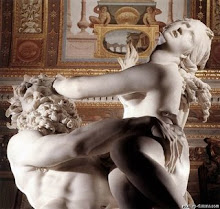








LONGHI, Pietro
(b. 1702, Venezia, d. 1783, Venezia)
Biography
Italian painter, the son of a goldsmith (his real surname was Pietro Falca), Pietro Longhi tried without much success to become one of the group of eighteenth-century Venetian painters so much in demand for large-scale decorations. His youthful work included frescos in the Palazzo Sagredo which reveal his lack of talent in this field. But at about the age of 40, Longhi managed to find his own creative voice which soon made him a specialist in a highly successful new genre. Drawing on his memories of youthful studies with Giuseppe Maria Crespi (an important precursor to Longhi's brand of genre painting), he began painting small canvases on everyday subjects, showing real places and people.
Unlike most view-painters at the same time, normally forced to seek foreign patrons, Longhi mainly worked for local patrons and collectors, including the noble families of Grimani, Barbarigo, and Manin. Longhi prepared his work by making careful preparatory sketches. He concentrated almost exclusively on small-scale canvases depicting the modest day-to-day activities of aristocratic Venetian families. The wonderful amiability of these episodes of no earth-shaking importance is marked by an observant, often gently satirical touch. The playwright Goldoni called Longhi a "man seeking the truth", but his was not a very harassing quest.
In later life Longhi also produced two interesting cycles of paintings. One was a series showing the Seven Sacraments while the other depicted Hunters in the valley. Both are now in the Pinacoteca Querini-Stampalia in Venice.
Longhi occasionally painted more than one version of his own compositions, and these again were often duplicated by pupils and followers. Alessandro Longhi (1733-1813), the son of Pietro, was a successful portraitist.




























.jpg)
















